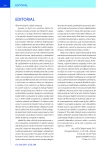HERNIATION OF THE URINARY BLADDER
Authors:
Tomáš Hradec; Michael Pešl; Petr Macek; Libor Zámečník; Tomáš Hanuš
Authors‘ workplace:
Urologická klinika Všeobecné fakultní nemocnice a 1. LF UK v Praze
Published in:
Ces Urol 2017; 21(3): 236-240
Category:
Case report
Overview
In two case studies we present patients with inguinal and inguino-scrotal herniation of the urinary bladder. The first patient had inguinal bladder herniation caused by lower urinary tract obstruction due to benign prostate hyperplasia and presented with urinary frequency, urgency and nocturia. The second patient had a rare extensive inguino-scrotal bladder herniation caused by urethral stricture after robot-assisted radical prostatectomy. As presented in the case studies, ultrasound and computed tomography (CT) play an important role in diagnostics of inguinal bladder hernias. Surgical repositioning of the bladder wall and hernia repair is the standard method of treatment. It might be hard to differentiate between lower urinary tract symptoms (LUTS) caused by bladder herniation, by obstruction of lower urinary tract or both. Further examination of the lower urinary tract after hernioplasty is therefore essential to identify possible persisting obstruction which might lead to recurrence of the hernia. Obstruction of the urinary tract might be treated by surgery or conservatively by pharmacotherapy.
KEY WORDS:
Urinary bladder herniation, inguinal hernia, inguino- scrotal hernia, hernia repair, scrotal cystocele.
Sources
1. Fisher PC, Hollenbeck BK, Montgomery JS, et al. Inguinal bladder hernia masking bowel ischemia. Urology 2004; 63: 175–176.
2. Huerta S, Fairbanks T, Cinat M. Incarcerated vesicoinguinal hernia presenting with gross hematuria. J Am Coll Surg. 2005; 201: 992–993.
3. Gomella LG, Spires SM, Burton JM, Ram MD, Flanigan RC. The surgical implications of herniation of the urinary bladder. Arch Surg 1985; 120: 964–967.
4. Karaman ZC, Saray A, Dorak C, Tamac NI. Ultrasonographic diagnosis of massive bladder hernia. J Clin Ultrasound 1993; 21: 534–536.
5. Casas JD, Mariscal A, Barluenga E. Scrotal cystocele: US and CT findings in two cases. Comput Med Imaging Graph 1998; 22: 53–56.
6. Thompson JE Jr, Taylor JB, Nazarian N, Bennion RS. Massive inguinal scrotal bladder hernias: a review of the literature with 2 new cases. J Urol 1986; 136: 1299–1301.
7. Laniewski PJ, Watters GR, Tomlinson P. Herniation of the bladder trigone into an inguinal hernia causing acute urinary obstruction and acute renal failure. J Urol 1996; 156: 1438–1439.
8. Vindlacheruvu RR, Zayyan K, Burgess NA, Wharton SB, Dunn DC. Extensive bladder infarction in a strangulated inguinal hernia. Br J Urol 1996; 77: 926–927.
9. Verbeeck N, Larrousse C, Lamy S. Diagnosis of inguinal bladder hernias: the current role of sonography. JBR‑BTR 2005; 88: 233–236.
10. Bisharat M, O’Donnell ME, Thompson T, et al. Complications of inguinoscrotal bladder hernias: a case series. Hernia 2009; 13: 81–84.
11. Andac N, Baltacioglu F, Tuney D, et al. Inguinoscrotal bladder herniation: is CT a useful tool in diagnosis? Clin Imaging 2002; 26: 347–348.
12. Watson LF. (1948) Hernia: anatomy, etiology, symptoms, diagnosis, differential diagnosis, prognosis and treatment, 3rd edn. Mosby, St. Louis, 1948: p 32.
Labels
Paediatric urologist Nephrology UrologyArticle was published in
Czech Urology

2017 Issue 3
Most read in this issue
- THE SIGNIFICANCE OF MRI IN DIAGNOSING PENILE FRACTURE IN A CASE REPORT OF A 16-YEAR-OLD BOY
- ILICOURETERAL FISTULA AS A CAUSE OF LIFE-THREATENING HAEMATURIA
- THE ROLE OF MULTIPARAMETRIC MAGNETIC RESONANCE IMAGING IN ACTIVE SURVEILLANCE OF PROSTATE CANCER
- LEIOMYOMA OF THE URINARY BLADDER AS AN INCIDENTAL FINDING DURING ULTRASONOGRAPHY EXAMINATION OF A PREGNANT PATIENT
